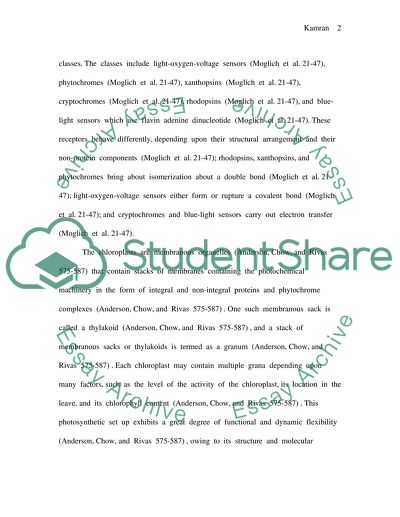Chloroplast: Structure to Function Relation Essay. Retrieved from https://studentshare.org/biology/1432548-chloroplast-structure-to-function-relation
Chloroplast: Structure to Function Relation Essay. https://studentshare.org/biology/1432548-chloroplast-structure-to-function-relation.


